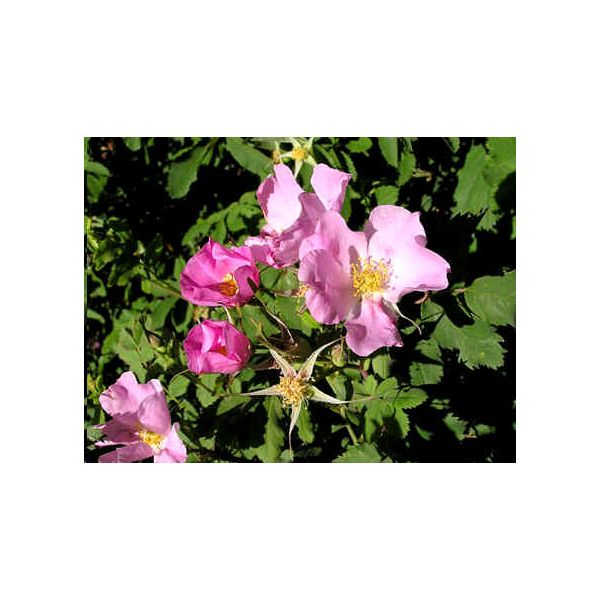Rosa Woodsii Seeds (Wood's Rose Seeds)
Rosa Woodsii Seeds (Wood's Rose Seeds)
Excellent rose for a wild woods garden theme, as it has a very natural character, and is not likely to outgrow its welcome.

Delivery
All orders shipped with UPS Express.
Always free shipping for orders over US $250.
All orders are shipped with a UPS tracking number.
Returns
Items returned within 14 days of their original shipment date in same as new condition will be eligible for a full refund or store credit.
Refunds will be charged back to the original form of payment used for purchase.
Customer is responsible for shipping charges when making returns and shipping/handling fees of original purchase is non-refundable.
All sale items are final purchases.
Help
Give us a shout if you have any other questions and/or concerns.
Email: contact@domain.com
Phone: +1 (23) 456 789
Availability: In stock
SKU
Rosa Woodsii
Rosa woodsii also known as Wood's rose or Pearhip rose, belongs to the Rosaceae family. This beautiful species is a North American native, growing in Eastern regions of Canada and the USA.
It is a very graceful, small, and tidy shrub which will grow to about 3 or 4 feet tall, producing a tight thicket over time. It is an excellent rose for a wild woods garden theme, as it has a very natural character, and is not likely to outgrow its welcome. This could be a good candidate for a shady spot, as I have found it preferring shaded or semi-shaded locations in its habitat.
The Rosa woodsii is a perennial more or less prickly or nearly unarmed, usually with well-developed, straight, slim, infrastipular prickles. Rose thickets are a blurring blend of reds, maroons, yellows, and greens in the fall. The canes are quite upright, with fairly fine grayish wood and grey thorns.
The leaves are alternate, deciduous, and odd-pinnate with 5-9 leaflets. The leaflets are elliptic or obovate, wedge-shaped toward the base, up to 5 cm. long and 2.5 cm. wide, and sharply serrated. The foliage is quite matte in appearance, and has a bluish luster. The overall appearance of the foliage is a delicate and fern-like texture. The fall foliage is often very colorful, in amber and ruddy hues.
Rosa woodsii has a beautiful, delicate, fragrant, and showy flower. The blooms are small, about 2 to 2.5 inches across, a soft lilac pink, and individually short-lived. This plant produces several blooms over a period of a few weeks. They appear in flat-topped inflorescences at the tips of the branches. The flowers 5 sepals are 1-2 cm. long and 2-3.5 mm. wide at the base and are persistent. The petals are 1.5-2.5 cm. long, light pink to deep rose with numerous stamens and many pistils. Their fragrance is a fairly strong "wild rose" scent. The flowers are hermaphrodite (have both male and female organs) and are pollinated by bees. They bloom from May to July.
The lovely flowers are replaced by dark red fruits ("rose hips") that range from mealy to sweet depending on the amount of rain and sun the plant receives and the time they are picked. The fruits are usually best after several frosts. The hips are globose to ellipsoid, 6-12 mm. long, and red, which ads another facet to its merits. There is a layer of hairs around the seeds, just beneath the flesh of the fruit; witch can cause irritation to the mouth and digestive tract if ingested.
Hardiness zones :
4-8 (-32c/-25f, -10c/15f). Rosa woodsii prefers moist, well-drained soil and a sunny position. It will also grow well in heavy clay soils, but they dislike water-logged soils. This plant can be found in valleys and hillsides, at low elevations, to forest openings at mid-elevations in the mountains. It can be almost startling to come upon a lone rose bush, covered in pink flowers, ten feet off the trail in the green under-story of a white-trunked Aspen forest. Rosa woodsii also forms deep, spreading thickets in open areas, especially along drainage.
| Common name | Wood's Rose |
|---|---|
| Species | Rosa woodsii |
| Germination | The Rosa Woodsii seeds need to be scarified. Then place them, for 2 - 3 weeks, in damp peat at a temperature of 27 - 32øc. It is then kept at 3øc for the next 4 months by which time it should be starting to germinate. Prick out the seedlings into individual pots when they are large enough to handle. Plant out in the summer if the plants are more than 25 cm tall, otherwise grow on in a cold frame for the winter and plant out in late spring. Rosa woodsii are browsed by livestock and big game from spring through fall. Game and livestock strongly prefer this shrub in the spring when the leaves appear. Porcupines and beavers also browse the leaves. Rosa woodsii hips persist on the plant through much of the winter, an many birds and mammals are sustained by these dry fruits when the ground is covered with snow. The hips are also a favorite food of squirrels. |
| Price View | Price Range |

